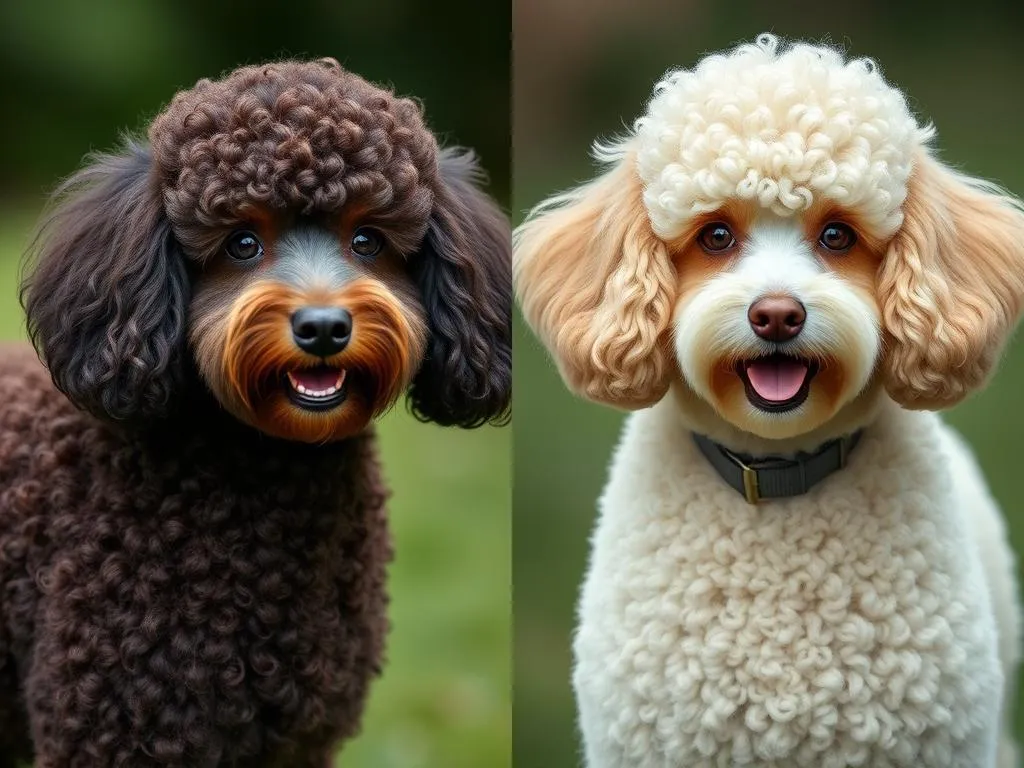
Introduction
Poodles are one of the most popular dog breeds worldwide, celebrated for their intelligence, elegance, and versatility. With their curly coats and playful personalities, they make wonderful companions for families, singles, and seniors alike. However, when considering adding a Poodle to your life, understanding the differences between male vs female poodle can be crucial in making the right choice for your household.
Understanding these differences goes beyond just physical characteristics; it encompasses temperament, behavior, care needs, and even health considerations. This article aims to provide insights into the unique traits of male and female Poodles, helping prospective owners make an informed decision.
Understanding the Poodle Breed
History of the Poodle
The Poodle’s origins can be traced back to Germany and France, where they were initially bred as water retrievers. Their name derives from the German word “Pudel,” meaning “to splash in water.” Over time, Poodles became popular in various roles, including as circus performers and companion animals. Today, they are recognized for their intelligence and versatility in various canine sports and activities.
Poodles come in three distinct types: Standard, Miniature, and Toy. Each type shares similar traits but varies in size and specific needs.
General Characteristics of Poodles
Poodles are known for their friendly and intelligent nature. They are highly trainable, making them ideal for obedience training and agility sports. Their intelligence is often ranked among the highest of all dog breeds. Appearance-wise, Poodles are characterized by their curly coats, which require regular grooming to prevent matting and maintain their aesthetic appeal.
Male Poodles: Characteristics and Behavior
Physical Traits
Male Poodles typically have a slightly larger frame compared to females. For instance, Standard male Poodles usually weigh between 60 to 70 pounds, while females weigh around 40 to 60 pounds. This size difference can be subtle in Miniature and Toy Poodles but is still noticeable.
In terms of grooming, male Poodles may require more frequent trimming around the face and body, especially if they have a particularly thick coat. Regular grooming is essential for all Poodles to keep their coats healthy and free from tangles.
Temperament
When it comes to temperament, male Poodles are often described as more playful and energetic than their female counterparts. They can be a bit more boisterous and might display a tendency towards mischief. Their playful nature often makes them a hit with children, and they thrive on interactive playtime.
Behavioral Tendencies
Male Poodles can exhibit territorial behaviors, especially if they feel their space is being encroached upon. This can manifest as barking or protective behavior. Socially, male Poodles generally get along well with other dogs and pets but may sometimes assert themselves in social situations.
Health Considerations
Male Poodles are prone to certain health issues, including hip dysplasia and certain skin conditions. Neutering can help mitigate some health risks and behavioral issues, such as aggression. However, it’s essential to consult a veterinarian for personalized advice on neutering and its effects.
Female Poodles: Characteristics and Behavior
Physical Traits
Female Poodles are generally smaller and lighter than males. For example, a Standard female Poodle may weigh between 40 to 60 pounds, while a male could reach up to 70 pounds. Grooming needs are similar to males, but females might require extra attention during their heat cycles, as they can shed more hair during this time.
Temperament
Female Poodles often exhibit a nurturing and affectionate nature. They tend to form strong bonds with their owners and can be incredibly loyal companions. Their temperament may be more even-keeled, making them suitable for families with young children.
Behavioral Tendencies
Female Poodles are often more adaptable in multi-pet households. They can exhibit nurturing instincts, especially if they are around younger pets or children. Their social dynamics can vary, but they usually maintain a harmonious relationship with other dogs.
Health Considerations
Female Poodles face unique health considerations, particularly regarding reproductive health. Common issues include pyometra (a serious infection of the uterus) and breast cancer. Spaying can greatly reduce these health risks and has the added benefit of preventing unwanted litters. As with males, consulting with a veterinarian about spaying is essential for optimal health outcomes.
Male vs Female Poodle: Key Differences
Summary of Behavioral Differences
While both male and female Poodles are intelligent and affectionate, their social behaviors differ. Males tend to be more energetic and playful, while females often display a nurturing temperament. In training environments, males might require more patience due to their playful nature, whereas females may be more focused.
Grooming and Care Requirements
In terms of grooming, both genders require regular maintenance to keep their coats in top condition. However, males may need more frequent grooming sessions, especially around their faces and bodies. Female Poodles might shed more during their heat cycles, requiring additional attention during those times.
Living Environment
Poodles are adaptable dogs, suitable for various living environments, whether in an apartment or a house with a yard. Males may thrive in active households with plenty of playtime, while females can be more content in calmer settings. Assessing your lifestyle and living situation is vital in choosing between a male and female Poodle.
Choosing Between a Male and Female Poodle
Factors to Consider
When deciding between a male vs female Poodle, consider your lifestyle and activity level. Males may be better suited for active families that can provide ample playtime, while females may be ideal for those seeking a loyal and nurturing companion.
Personal Preferences and Breed Compatibility
Personal preferences play a significant role in the decision-making process. Some owners may prefer the playful nature of male Poodles, while others may appreciate the affectionate disposition of females. Understanding the unique characteristics of each gender can help align your choice with your expectations.
Adoption Considerations
When considering adoption, it’s essential to source your Poodle from reputable breeders or shelters. Ensure that you understand the dog’s background, temperament, and any potential health issues. Ethical sourcing is crucial in promoting responsible pet ownership and care.
Conclusion
In summary, understanding the differences between male vs female Poodle can significantly impact your decision when bringing a Poodle into your home. While both genders share many similarities, their behaviors, grooming needs, and health considerations can vary.
Ultimately, the choice between a male and female Poodle should be based on your unique circumstances and lifestyle. Take the time to assess your preferences, family dynamics, and living conditions to make an informed decision that leads to a happy and fulfilling relationship with your new companion.
Frequently Asked Questions (FAQs)
What are the most common behaviors in male Poodles?
Male Poodles are often playful, energetic, and occasionally mischievous. They may exhibit territorial behavior and tend to be social but can require more training to manage their exuberance.
How do female Poodles typically behave around children?
Female Poodles are generally affectionate and nurturing, making them great companions for children. They often bond strongly with family members and are protective yet gentle.
Are there significant health differences between male and female Poodles?
Yes, males and females can face different health issues. Males may be more prone to certain reproductive health problems, while females may experience risks associated with their reproductive cycle.
What should I expect in terms of grooming for each gender?
Both male and female Poodles require regular grooming to maintain their coats. However, males may need more frequent grooming sessions, especially during shedding periods or if they have a thicker coat.
How can I train my Poodle regardless of gender?
Training a Poodle, whether male or female, involves consistency, positive reinforcement, and patience. Both genders are intelligent and eager to please, making them highly trainable with the right approach.









